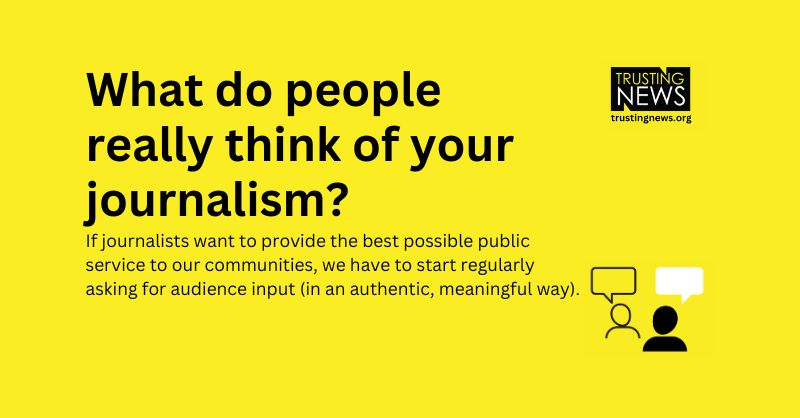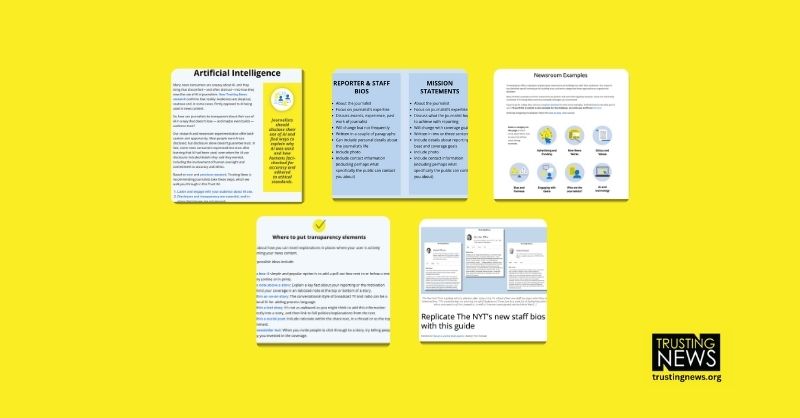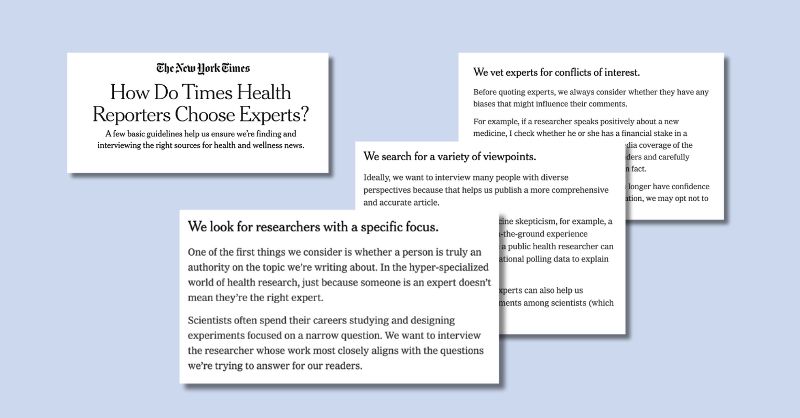
Heartbreaking Minneapolis shooting is a reminder for journalists to get clear about ethics
With traumatic visuals, explain your decisions
Want to get this Trust Tips newsletter in your inbox each Tuesday? Subscribe here.
If you tuned into the heartbreaking coverage of the deadly shooting at Annunciation Catholic Church and School in Minneapolis last week, you’ve likely seen photos and videos of what’s become an all-too-familiar scene — distraught kids and families in total disbelief and immense grief.
You’ve also likely seen the video circulating on social media of a 10-year-old boy explaining how his friend shielded him from the shooter by lying on top of him. While we’re not linking to the video here, in some of the footage, you can see multiple reporters recording as the child explains what will likely be one of the most traumatic experiences of his life.
Many of the comments on this video — and photos from the scene that day — are not very flattering to journalists. I saw comments on social media where people said journalists were preying upon vulnerable kids. Many people had legitimate questions about whether a parent or guardian was present and gave permission for their child to do the interview. Others felt it was unethical for journalists to interview a kid who is still in shock at the scene of a crime. Some asked why news organizations didn’t blur the faces of minors who appeared in photos from that day.
At the heart of these criticisms are some assumptions about journalists’ motives:
- That journalists aren’t ethical or careful in their reporting
- That journalists aren’t taking care to minimize harm and don’t care about the impact of their work
- That journalists prioritize video views and clicks over people’s emotional and mental well-being
These negative assumptions are something we talk about all the time at Trusting News. When people don’t understand something (such as how you’re working to minimize harm in your coverage), they often jump to criticisms that are rooted in their own assumptions about journalists. But oftentimes, these assumptions are just information gaps people have about journalists and how they operate.
While it’s likely some of these journalists did get consent from the parents and had difficult, ethical conversations about which photos and videos were appropriate to share, those decisions and processes are all invisible to the public. It’s also very possible that some journalists didn’t get consent or have conversations about the potential harm publishing this content could have. That’s why if you’re a journalist who is thoughtful about your decisions, you should make that clear to your audience.
As journalists we should be prepared to respond to this type of criticism. But it’s even better when we’re proactive and get on the record first about how we are careful with our reporting. Sharing your reasoning before questions arise makes it easier for audiences to understand and trust your decisions.
In today’s newsletter, we share ways you can do that and examples of what this looks like.
Talk about how people end up in your photos and videos
People have a lot of questions when it comes to how people end up on TV, on social media or on a news organization’s website.
As journalists, we should be explaining questions like:
- Do people agree to be in your photos/videos?
- Do you publish photos of minors? Crime victims? What sort of consent, if any, do you get before publishing?
- Do you follow ethical guidelines when considering whether to publish a graphic photo? Do we recruit people to be in your photos/videos?
- Can people ask not to be photographed or recorded?
- If a photo of someone is published by your news organization, how could someone ask for it to be removed? (Do you have a process for that?)
- Do your decisions differ based on how prominently someone is featured in the images?
- Do you stage photos/videos for stories?
The answers to these questions aren’t always black and white. There can be a lot of nuances involved. As journalists, we should explain that while, yes, it typically depends on the circumstances of the moment, when making decisions about who we include in our photos and videos we are thinking carefully about our values and ethics.
We could also explain what people should expect if they see a photographer from our newsroom. We could explain what our rights are as journalists when it comes to taking photos and videos. We also should explain what the public’s rights are. There is often confusion around what rights an individual has when out in public. Often, there is an expectation of privacy that just doesn’t exist. We should explain this to our communities, and follow it up by explaining our own ethical considerations around how we approach a person’s right to privacy even if they are in a public space.
Examples of what this looks like
Here’s an example of what this can look like from the Chicago Sun-Times. When a tragic shooting happened during a July 4 parade in Chicago a few years ago, the Sun-Times made a difficult decision to run a photo of shooting victims from the scene.
Executive Editor Jennifer Kho wrote a column explaining why they ran the photo.

We appreciate that Kho included a detailed description of how carefully the publication of the photo was discussed and an explanation as to why the newsroom felt that this image needed to be published.
Since an explainer column will likely attract much less traffic than the actual breaking news story, it’s always good to include a sentence about the decision in the actual news stories where photos or videos run. This can look as simple as a sentence that links back to a column or video that explains your decision.
Two other examples where newsrooms have explained their decisions around photos:
- USA TODAY explained their decision to publish the powerful photo of a father and daughter who drowned at the border
- Atlanta Journal-Constitution photojournalist John Spink wrote a column about what it’s like to document homicides, explaining the role of journalists in these situations.
Moving forward
What we’d love to see more of in the wake of the Minneapolis shooting, and other similar situations you might be covering, are more public explanations about the ethics and process behind your decisions.
Now, journalists could make an argument either way about whether it’s appropriate to share these types of photos or not. We aren’t here to tell you what’s best for your newsroom or audience. But whatever you decide, we do want to urge you to get transparent about your decision with your audience.
Here are some additional resources to help you do that.
- Tips for how you can build trust with your photo and video
- Explain your goals, process and integrity when covering mass shootings
- Transparency Trust Kit walks you through how to add transparency into daily content
- Ethics Trust Kit walks you through how to talk the public about your ethics
One more new resource we thought would be helpful to share from the Minnesota Journalism Center: Take care of each other: Resources for Minnesota journalists covering the Annunciation school and church shooting.
The jobs you do as journalists are really hard, and we hope you all (especially Minnesota journalists) are taking some time this week to take care of yourselves.
At Trusting News, we learn how people decide what news to trust and turn that knowledge into actionable strategies for journalists. We train and empower journalists to take responsibility for demonstrating credibility and actively earning trust through transparency and engagement. Learn more about our work, vision and team. Subscribe to our Trust Tips newsletter. Follow us on Twitter, BlueSky and LinkedIn.

Project manager Mollie Muchna (she/her) has spent the last 10 years working in audience and engagement journalism in local newsrooms across the Southwest. She lives in Tucson, Arizona, where she is also an adjunct professor at the University of Arizona’s School of Journalism. She can be reached at mollie@trustingnews.org and on Twitter @molliemuchna.



